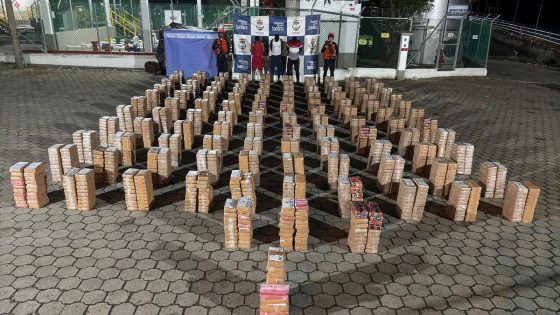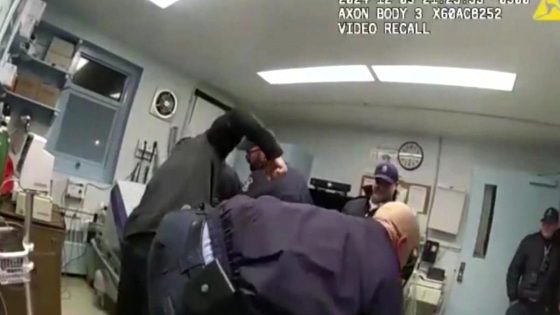Off the Pacific coast of Colombia, on February 6, 2025, a daring interception unfolded as the Colombian navy halted a semi-submersible vessel laden with more than 5,000 pounds of cocaine. This marked an alarming milestone: the first seizure of a “narco sub” in Colombia this year, a term that illustrates the lengths to which drug traffickers will go to evade authorities.
- Semi-submersible vessel intercepted off Colombia's coast.
- Over 5,000 pounds of cocaine seized.
- First "narco sub" seizure of the year.
- Three suspects apprehended during operation.
- Significant drug trafficking method utilized globally.
- Colombia navy seized 20 semi-submersibles in 2023.
Roughly 100 nautical miles from the bustling town of Tumaco, close to the Ecuadorian border, the operation was swift and strategic. As the navy engaged the vessel, officials reported that it was manned by two Colombian nationals and one Ecuadorian. The apprehension resulted in the detainment of these individuals, whose faces were equally obscured by the shadows of law enforcement and the looming specter of severe legal repercussions. Images released captured the moment of their arrest—three men surrounded by a sea of packages, each holding their share of the staggering discovery: 111 bundles containing a massive 2,276 kilograms of cocaine.
In a vivid social media post, Colombia’s navy showcased footage of the confrontation, where operatives employed spotlights to pinpoint the elusive semi-submersible in the night. Additional clips portrayed naval officers methodically unloading the bricks of narcotics upon their return to port, underscoring both the scale of the operation and the tenacity of those working to disrupt the flow of illicit substances.
Semi-submersibles are not your typical vessels; they hide low in the ocean’s surface, barely peeking above the water, allowing them to slip past detection by radar systems. This design has made them a favored tool among international drug traffickers. Despite their primary haunting grounds being the Colombian waters, these vessels have increasingly appeared across global shores. It is a reflection of a persistent issue that authorities struggle to combat.
This incident is not an isolated event. Just last month, another “narco sub” met a dramatic demise off the coast of northwestern Spain, where it shattered into pieces while being towed by a fishing boat. Similarly, reports from November noted that the Mexican Navy seized a staggering 8,000 pounds of cocaine from a “narco sub” 150 miles out from Acapulco. In September, a U.S. Coast Guard operation revealed more than $54 million worth of cocaine offloaded, a significant portion of which came from a similar vessel.
The Colombian navy, reflecting on their efforts, stated that they intercepted 20 semi-submersibles throughout 2023. These operations resulted in the confiscation of a total of 30 tons of cocaine and over 5 tons of marijuana, illustrating the persistent threat posed not only to Colombia but to the world at large. Notably, events earlier that year included the harrowing discovery of a “narco sub” carrying two deceased individuals along with nearly three tons of cocaine.
As authorities process the drugs seized in this recent interception, legal procedures are set in motion for the detained crew members. Investigations will delve into the broader network of trafficking, examining how these vessels are constructed, how they are funded, and their operational routes. The ramifications of this case extend beyond the immediate capture; they point to a relentless battle against drug trafficking that has profound implications for public health and safety both domestically and internationally.
Looking ahead, it remains to be seen what further developments will emerge from this operation. Authorities are likely to strengthen their surveillance and enforcement measures, aiming to intercept more of these elusive vessels and dismantle the networks behind them. This latest incident serves as a stark reminder of the ongoing struggle against drug trafficking, a complex issue woven into the very fabric of international law enforcement and public policy.

































